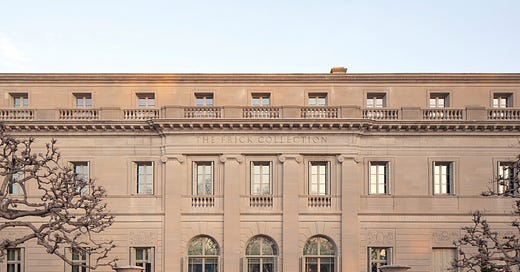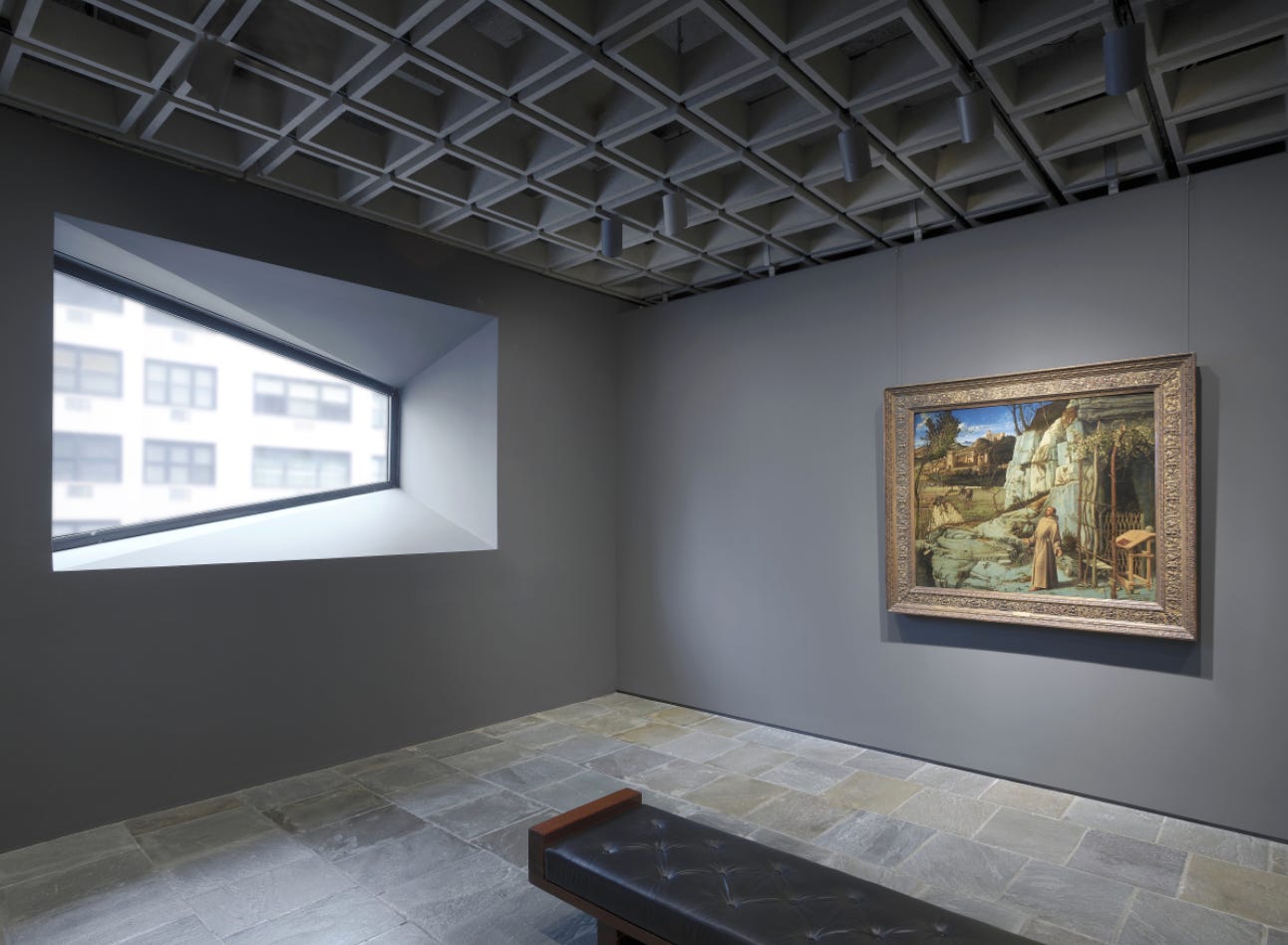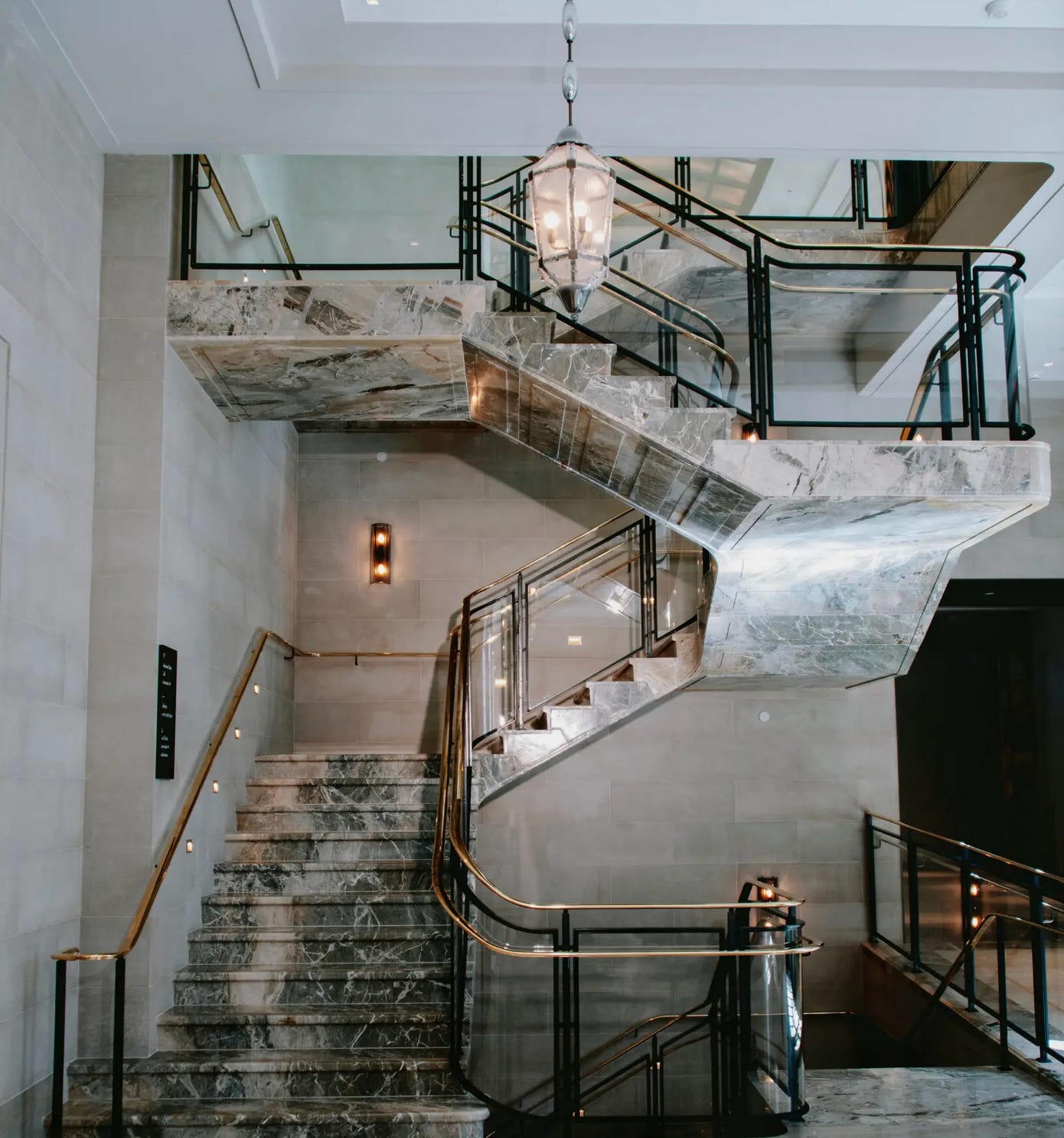Frick Collection is Back
After a five-year renovation, the New York museum reopens its doors with twice as many artworks
The newly renovated Frick Collection’s façade
The art world knows: when it comes to major renovations involving renowned institutions, hire architect Annabelle Selldorf. German based in New York, she was chosen to oversee the $220 million expansion project of the beloved Frick Collection in Manhattan, which reopened to the public last Thursday.
The firm that bears her lastname also designed the impeccable 2001 renovation of the Neue Galerie – the former house of a Vanderbilt a few blocks North of the island, converted into a museum, the collection of Ronald Lauder – and the update of the Sainsbury Wing at the National Gallery in London, set to open on May 10, as well as projects for the galleries David Zwirner, Hauser & Wirth and Michael Werner, among others in NYC.
For five years, the Frick Collection closed its doors to the public. Temporarily, it was housed in the Marcel Breuer’s building, the former Whitney Museum on 75th Street and Madison Avenue, which was also loaned by the Metropolitan Museum and has now been purchased by Sotheby’s. For locals and tourists alike, being able to visit this museum again is pure joy.
Bellini back at the Frick Madison, at the Breuer Building
Born in 1849, Henry Clay Frick was one of the most influential American industrialists of the Gilded Age, playing a significant role in the development of the steel and coke industries. He was a partner of Andrew Carnegie and was known for his ruthless business practices, including his role in the tragedy associated with the Johnstown Flood of 1889, which involved the failure of the South Fork Dam, resulting in the deaths of more than 2,000 people.
He was among those held responsible for the disaster because of his involvement in the management of the dam. In his will, Frick requested that his home be turned into a museum. He died in 1919, after living in the mansion for only five years, which remained occupied by his wife Adelaide and daughter Helen until 1931, opening to the public in 1935.
The Boucher Room
The main new features of the renovation are the auditorium, the new staircase and the access to the second floor. The Stephen A. Schwarzman Auditorium mimicks a shell, super intimate and elegant, with 220 seats. According to Selldorf, “I wanted this place to have the color of nothing, like a cloudy day.”
The new auditorium
The new staircase connects the reception and ticket office to the second floor and does not compete with the iconic main staircase of the mansion. The 18 tons of Breccia Aurora marble in shades of beige and gray is a masterpiece in itself. After much study of possibilities until achieving “perfection”, Selldorf speaks humbly about the final result, stating that the beauty comes from the nature of the material.
Annabelle Selldorf’s staircase
The second floor of the house, where the bedrooms were located, housed the administrative part of the museum. Now, they have been transformed into exhibition space – and each room reflects the tastes of who slept there. In Mr. Frick’s room, there are portraits – the famous painting by Ingres (added to the collection after his death) and the canvas he chose to look at every time he woke up and went to sleep, a portrait of Lady Hamilton by George Romney.
Mr. Frick’s bedroom with the iconic Ingres painting
In his wife Adelaide's bedroom, there is Baroque art – with the Boucher panels. And where their daughter slept, there are religious Renaissance paintings – by Piero della Francesca, Fabriano and Lippi, among others. The beginning of the collection, with works by Corot, Millet, Rousseau and other artists associated with the Barbizon School, also moved to the second floor. Interestingly, when they lived in the house, the three Fricks had 30 employees to take care of the house.
My darling: Rembrandt
New exhibition rooms – the museum now displays twice as many works as before the renovation – a dedicated Education department and new wall fabrics, trimmings, as well as professional cleaning of chandeliers and objects, are among the other improvements the renovation brought.
Turner at the library
Despite all these changes, the renovation was also imperceptible. Visitors can still feel the same discreet energy – despite the power – that the collection exudes. All the classics are still there and seem to be brighter, more present – the various Vermeers, Rembrandts, Turners, Velázquez, Goyas, Frans Hals, El Grecos, Titians and, perhaps the most beloved of the collection, “Saint Francis in the Desert”, painted by Giovanni Bellini. The museum is also presenting contemporary works by Ukrainian Vladimir Kanevsky for the first time – porcelain flowers that coexist with the masterpieces as if they had always been there. Pure beauty.
Vladimir Kanevsky’s flowersMake a friend happy :)
Service:
www.frick.org
The Frick Collection
1 East 70th Street
Advanced tickets recommended
Open Wednesday-Sunday 9AM-6PM (Fridays until 9PM)













